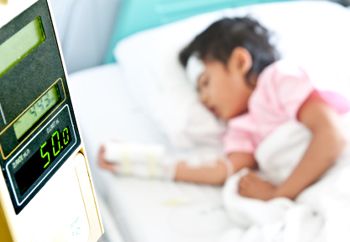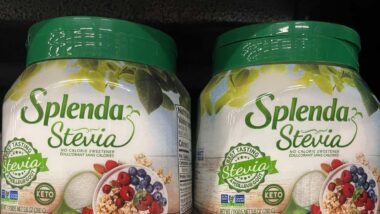Top Class Actions’s website and social media posts use affiliate links. If you make a purchase using such links, we may receive a commission, but it will not result in any additional charges to you. Please review our Affiliate Link Disclosure for more information.

Fluoroquinolones, or simply quinolones, are a class of antibiotics that work by inhibiting the activity of certain enzymes, causing bacteria to die. They include an older group of antibiotics like ciprofloxacin (brand name Cipro), norfloxacin (brand name Noroxin), and ofloxacin (brand name Floxin Otic), and a new group consisting of gemifloxacin (brand name Factive), levofloxacin (brand name Levaquin), and moxifloxacin (brand name Avelox).
Quinolones make up about 11 percent of antibiotics prescribed for outpatient infections. They are commonly used to treat respiratory and urinary tract infections. Unfortunately, quinolones are also known to cause adverse side effects, including: tendon ruptures, seizures, and exfoliative rashes such as Stevens Johnson Syndrome (SJS) and Toxic Epidermal Necrolysis (TEN).
In one case, a 78-year-old woman began to develop a rash and blistering two days after completing a ten-day course of the quinolone antibiotic levofloxacin. Within seven days, the woman’s rash had progressed to full-blown TEN. Her treatment required 22 days in a burn unit before she could be discharged to a rehabilitation center. The woman’s medical providers concluded that the TEN was related to her levofloxacin treatment.
Stevens Johnson Syndrome
Stevens Johnson Syndrome is not one of the more common quinolone side effects, but when it occurs, its severity can range from mild to life-threatening. Initial SJS symptoms typically mimic the flu, with symptoms such as body ache, fever, or cough. A rash begins to form on the skin and within a few days, the rash begins to form blisters that may enlarge and coalesce into single areas of skin that may begin to peel away.
As well as affecting the outer skin, blisters may form on the inside of the mouth, throat, eyes, genitals, or anus. Blisters inside the mouth may make it difficult to eat and too painful to close the mouth.
Eye symptoms are also common. The patient may develop excessive purulence or keratoconjunctivitis, an inflammation of the cornea and conjunctiva.
When the areas of peeling skin cover a large proportion of the body’s surface area, the affliction is referred to as toxic epidermal necrolysis. Generally, the name SJS applies where less than 10 percent of the body’s surface is affected, and the term TEN is used when the condition affects 30 percent or more. After some years of scientific confusion about the relationship between the two conditions, TEN is now considered to be a severe form of SJS.
Treatment generally requires hospitalization, with constant monitoring and treatment until the condition resolves. Typical treatment involves fluid replacement, wound dressing, and possibly medication. It’s increasingly common to treat SJS and TEN in a hospital burn unit due to the conditions’ similarity to severe burns.
The costs of quinolone-related SJS or TEN can be enormous. The weeks or months required for treatment prevent the victim from earning income while simultaneously racking up ponderous medical bills. The pain and possible lasting physical disfigurement can also take a considerable emotional toll. Victims may be able to seek compensation by means of a quinolone lawsuit.
Do YOU have a legal claim? Fill out the form on this page now for a free, immediate, and confidential case evaluation. The attorneys who work with Top Class Actions will contact you if you qualify to let you know if an individual lawsuit or class action lawsuit is best for you. [In general, quinolone lawsuits are filed individually by each plaintiff and are not class actions.] Hurry — statutes of limitations may apply.
ATTORNEY ADVERTISING
Top Class Actions is a Proud Member of the American Bar Association
LEGAL INFORMATION IS NOT LEGAL ADVICE
Top Class Actions Legal Statement
©2008 – 2024 Top Class Actions® LLC
Various Trademarks held by their respective owners
This website is not intended for viewing or usage by European Union citizens.
Get Help – It’s Free
Join a Free Quinolone Class Action Lawsuit Investigation
If you or someone you know took Cipro, Levaquin, Avelox or another quinolone antibiotic and were diagnosed with liver failure, Stevens Johnson Syndrome (SJS) or toxic epidermal necrolysis (TEN), you may have a legal claim. See if you qualify by submitting your information below for a free and confidential case review.
An attorney will contact you if you qualify to discuss the details of your potential case at no charge to you.
Oops! We could not locate your form.












